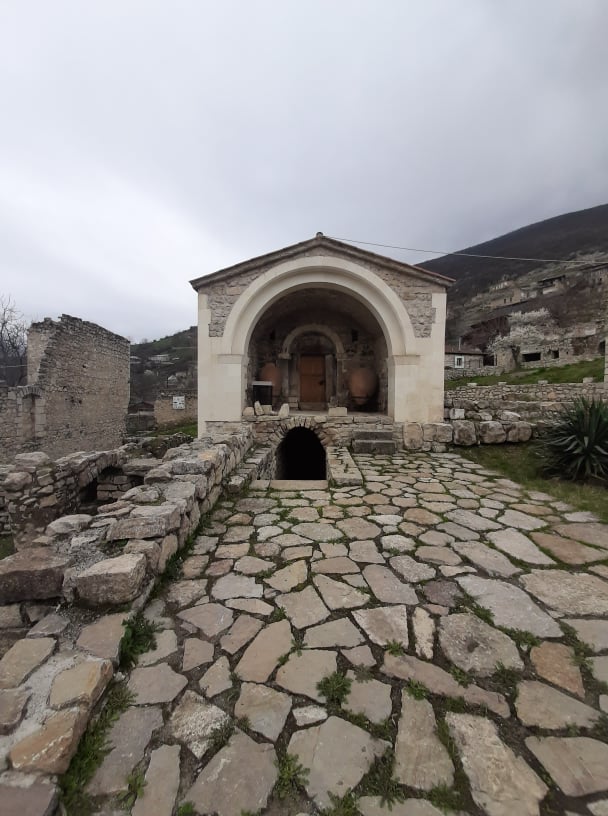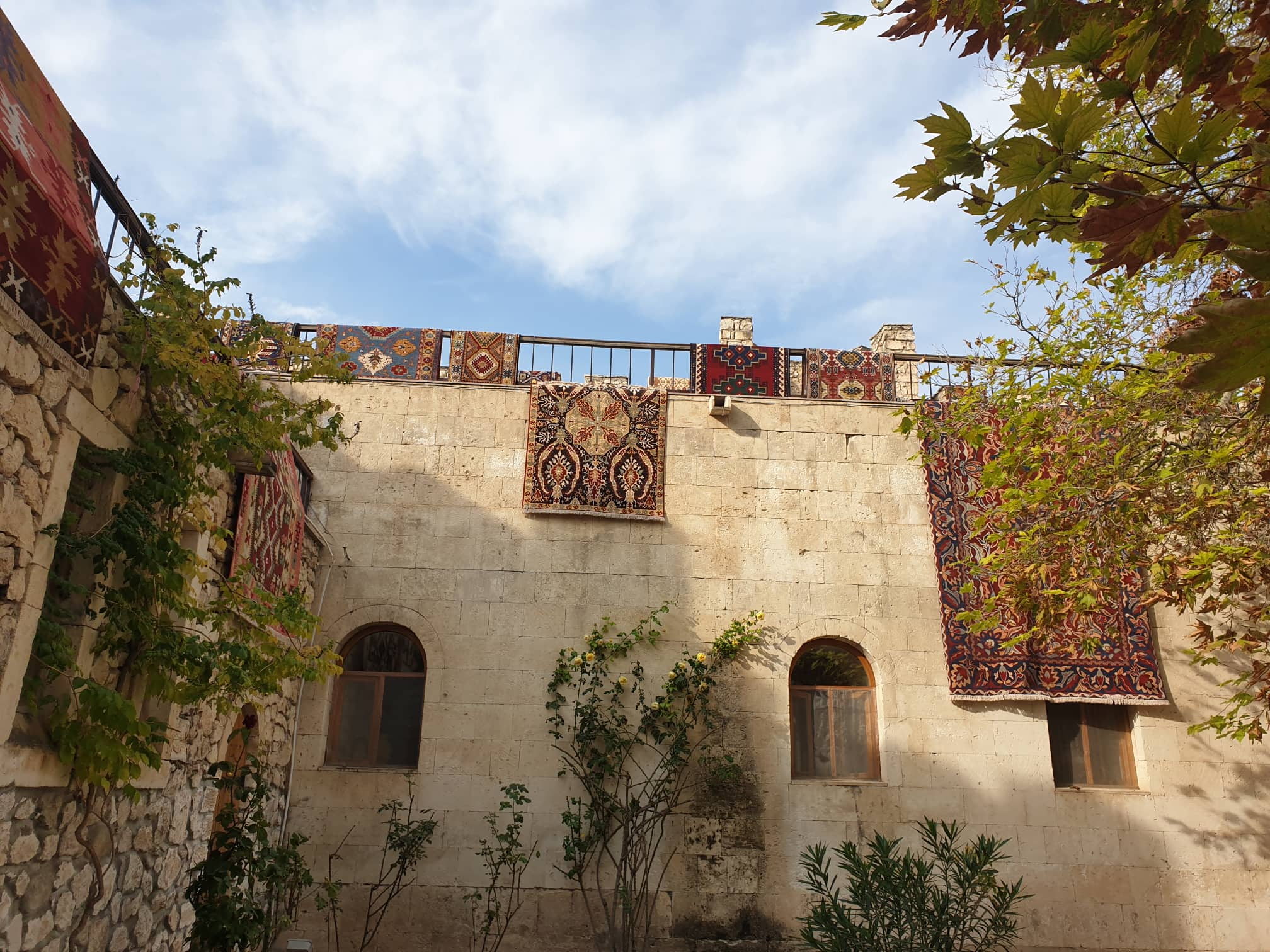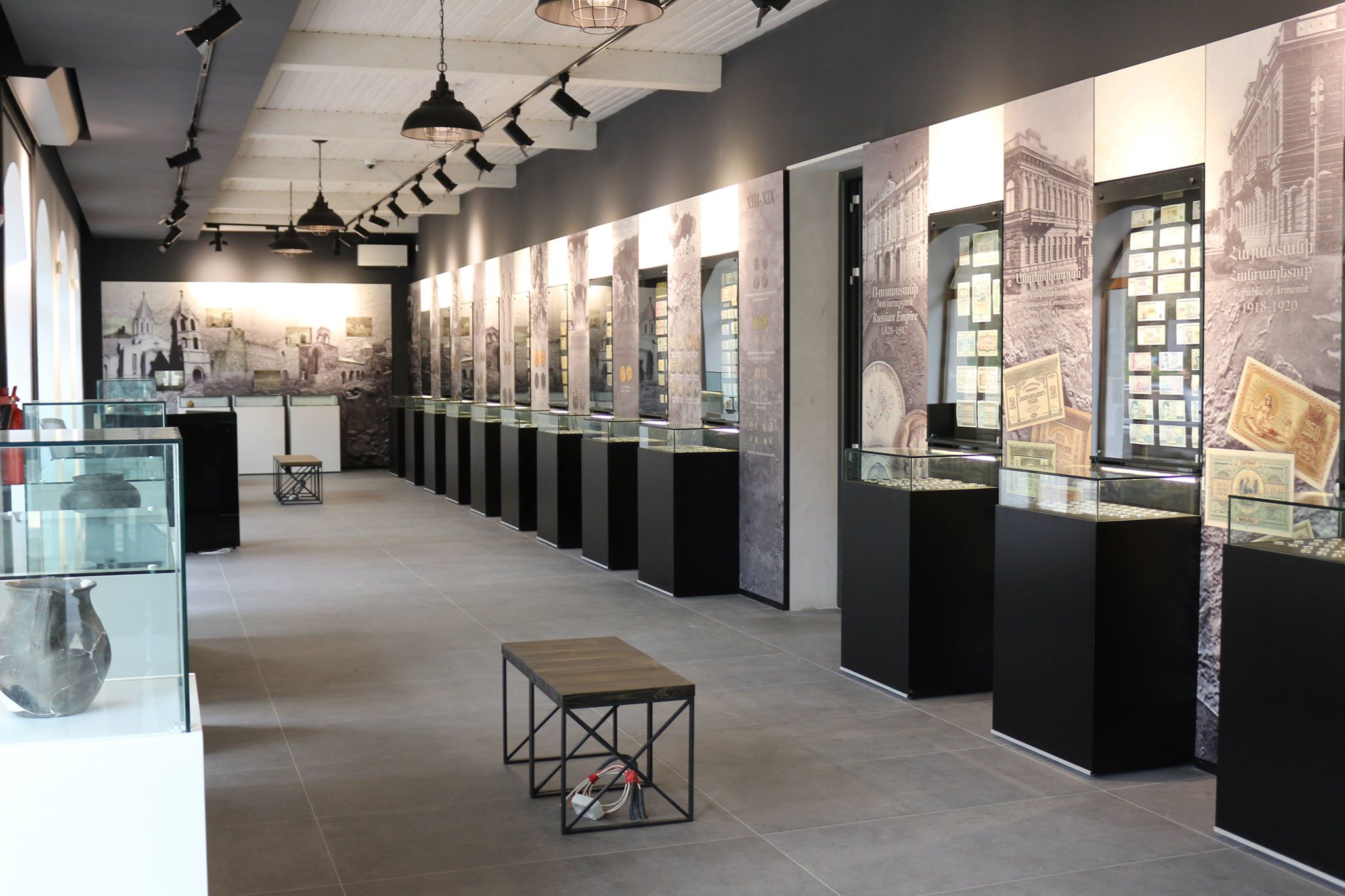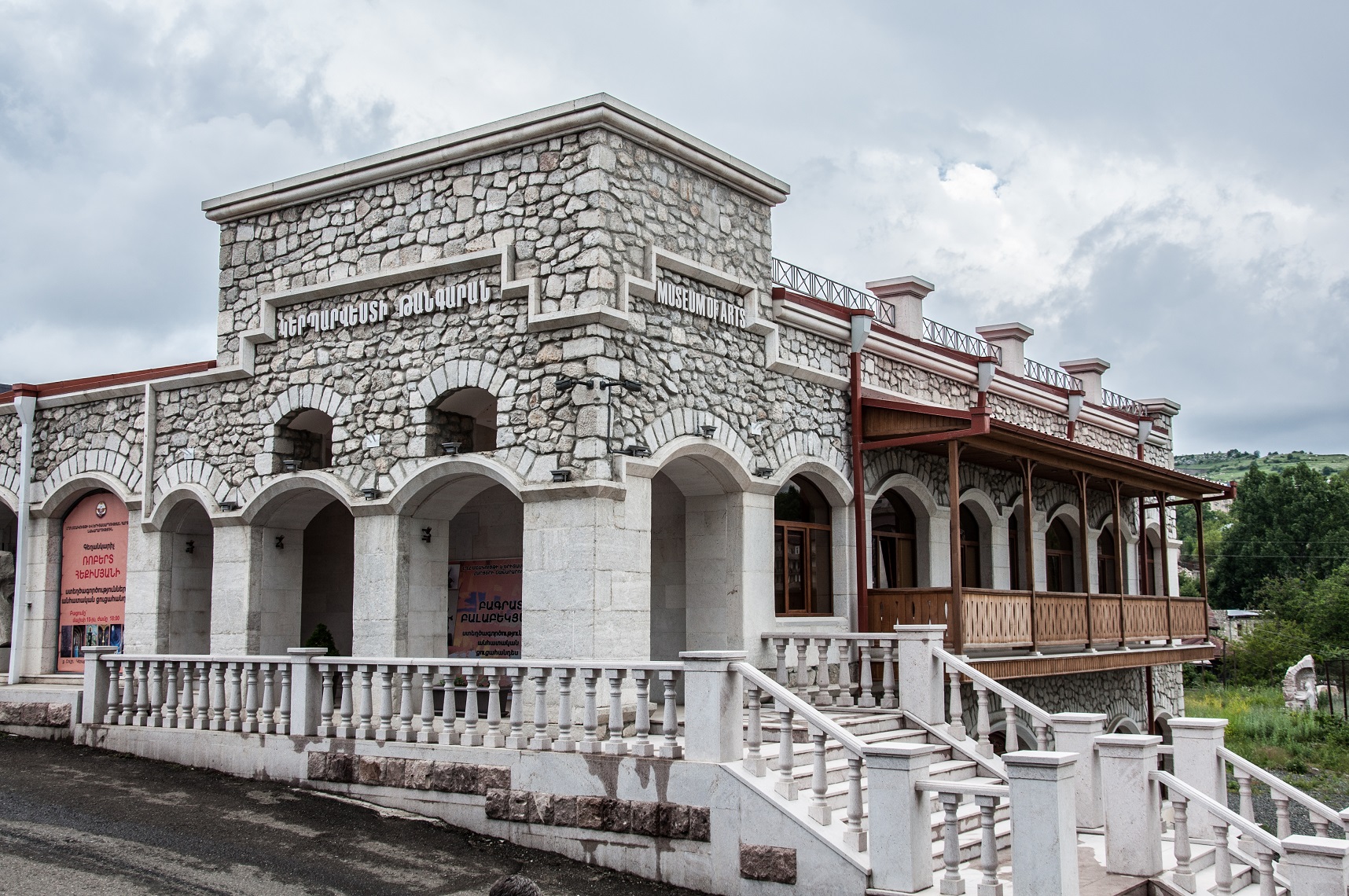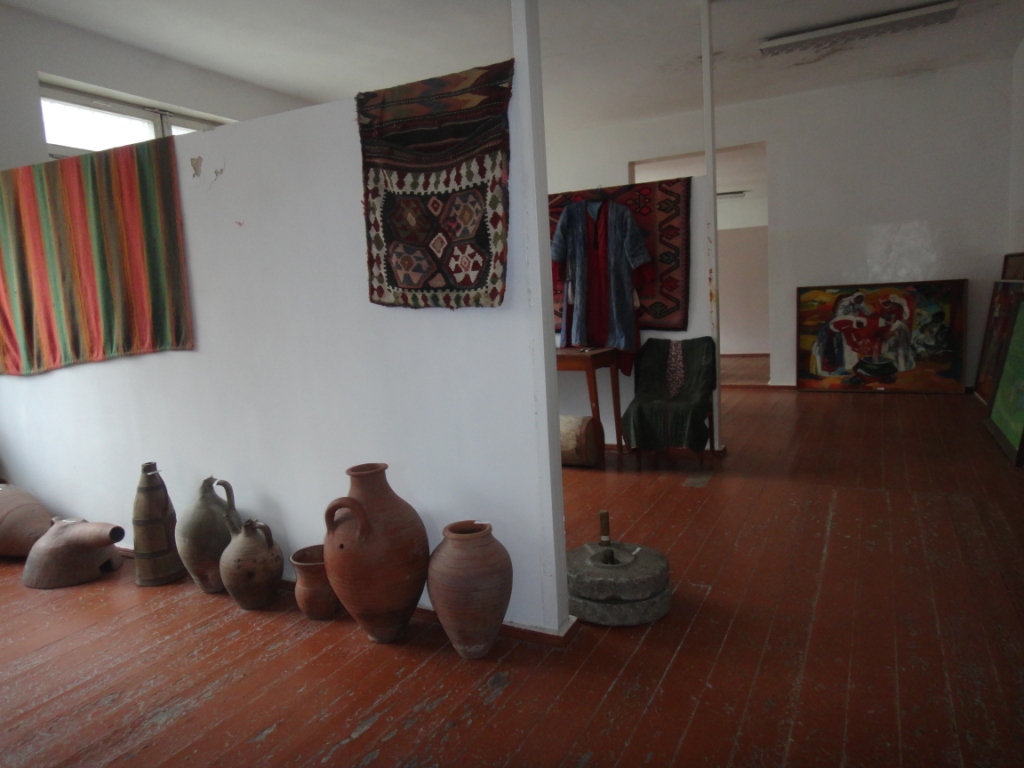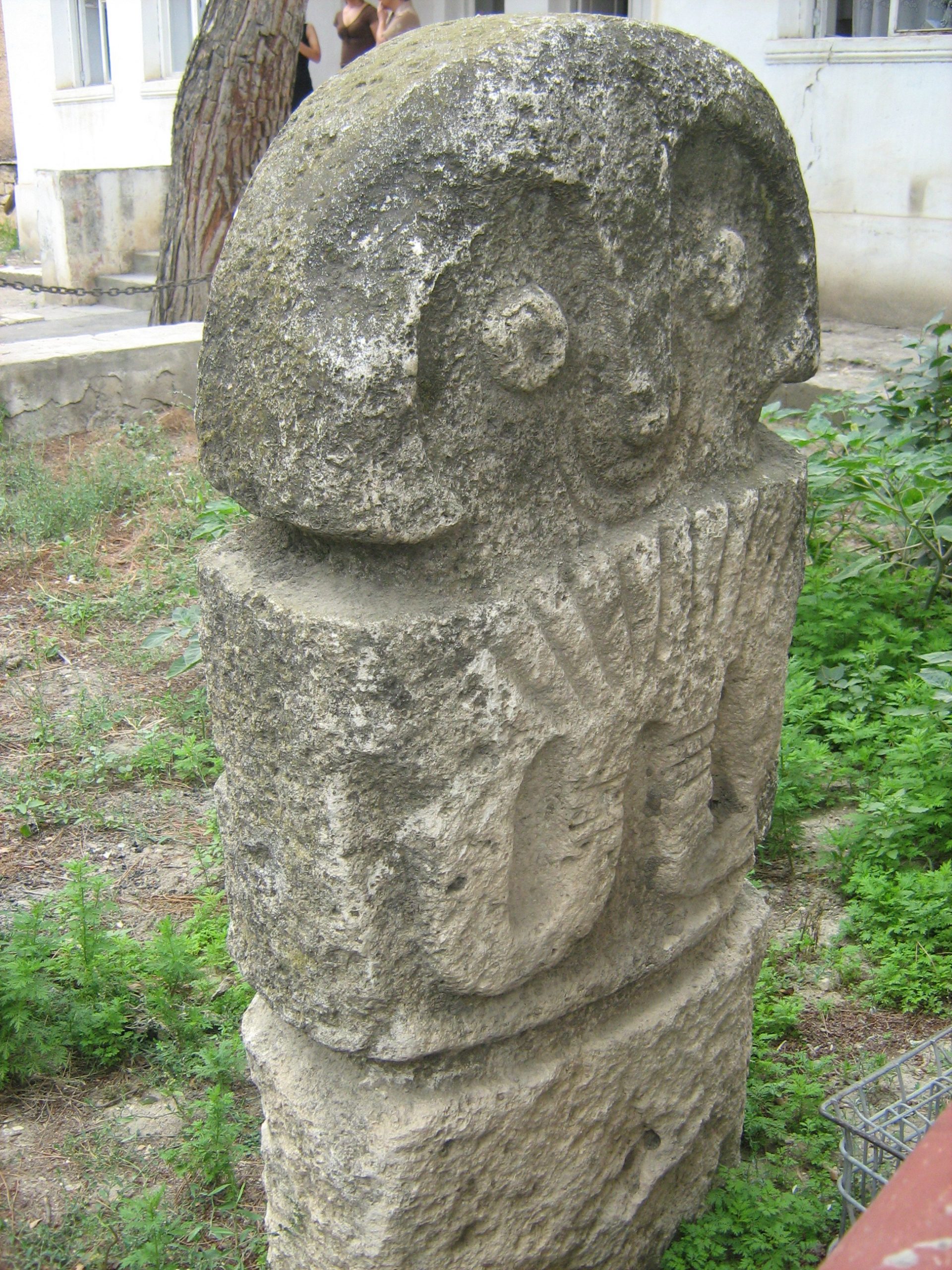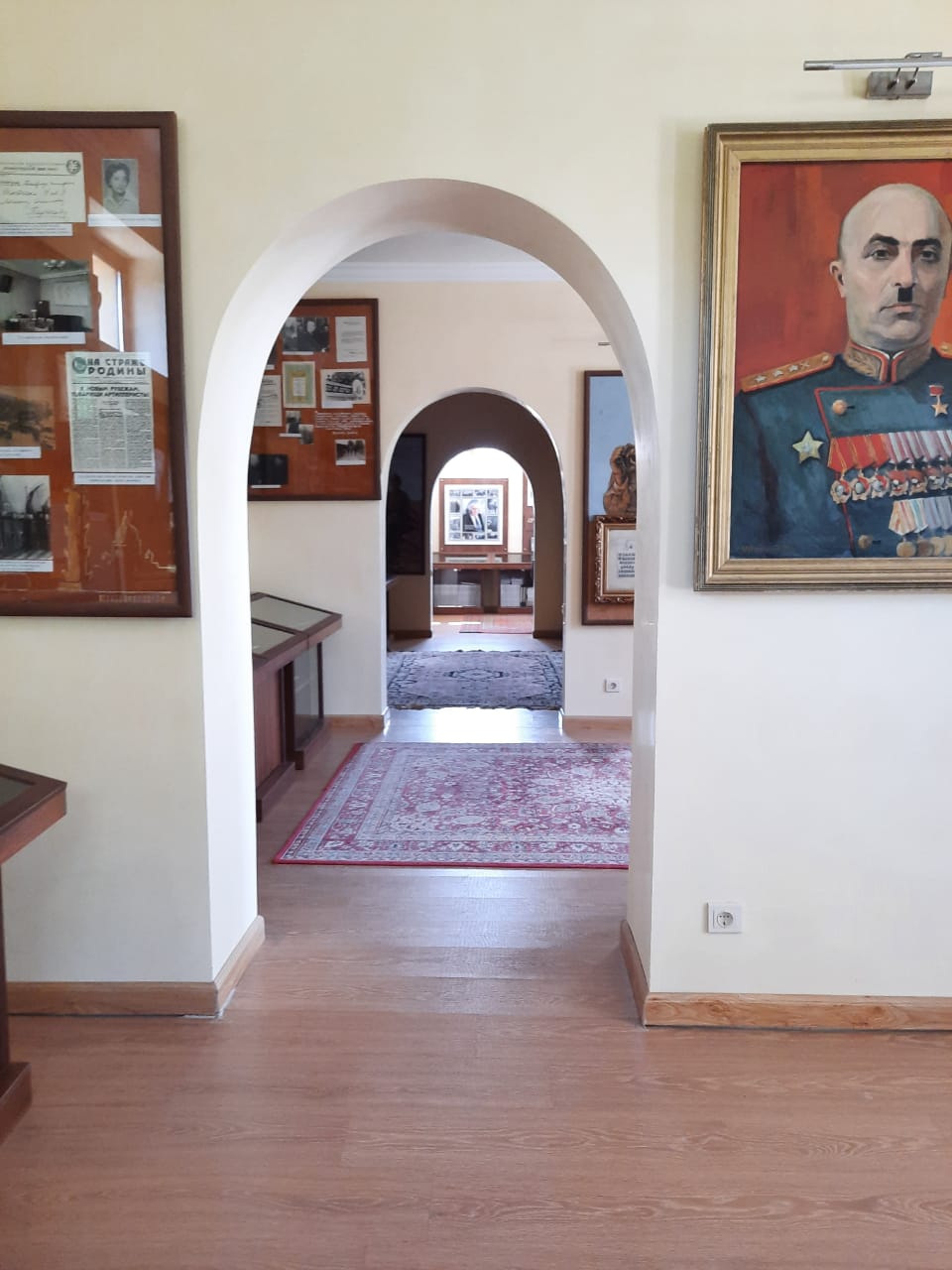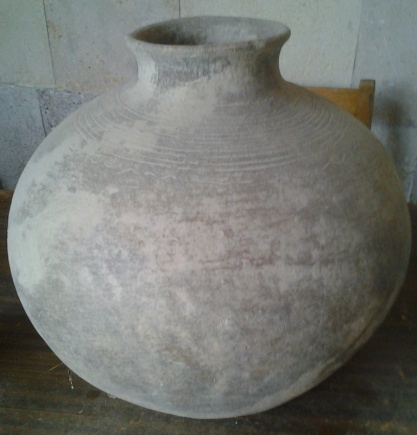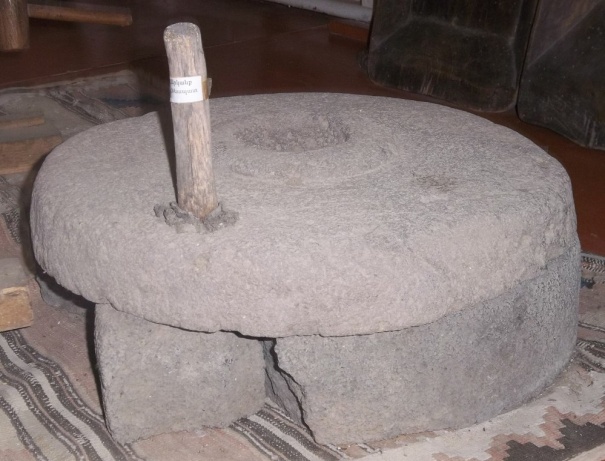| Image | Name | Location | Founded In | Summary | Categories | hf:categories | |
|---|---|---|---|---|---|---|---|
| Museum after Tevan Stepanyan in Tumi | Tumi/Hadrut | 2016 | It is the branch of the Arthur Mkrtchyan Patriotic Museum in Hadrut. The museum was founded in 2016 and had 50 exhibits. All the exhibits presented the life and activities of Tevan Stepanyan, a resident of Tumi village, a prominent state and military … | Museums | Visit | museums | |
| Togh’s Melikian Palace | Togh | 2013 | A museum was opened in 2013 at the Melik Yegan Reception, located in the territory of the “Melikakan Aparang” State Historical and Cultural Reserve in Togh, where 88 pieces of archeological materials unearthed during excavations in the area of the mansion were displayed. There were historical and cultural items from the 17th-19th … | Museums | Visit | museums | |
| Tigranakert Archaeological Museum | Tigranakert | 2010 | Tigranakert Archaeological Museum was established in 2010 and operated in the 18th-century fortress located in the territory of “Tigranakert State Historical and Cultural Reserve”. The museum consisted of three halls, two of which exhibit unique cultural artifacts from the 5th century BC to the 17th century AD during excavations in Tigranakert. The findings of the Haykajr mausoleum and excavations in Nor Karmiravan were displayed in the third hall. They are basically 300 elegant clay vessels, objects made of stone and … | Museums | Visit | museums | |
| Artsakh State Historical Museum of Local Lore | Stepanakert | 1939 | The Artsakh State Museum of History and Geography is the only historical and cultural center of Artsakh, where the history of Artsakh from ancient times to the present day is presented. The museum was founded in 1939. 51566 historical and cultural values are included in the fund repositories and exhibition of the Artsakh State Museum of History and Geography. The exhibition of the museum begins with interesting scenes depicting the nature of Artsakh, followed by a section on archeology. The materials on display here include fossilized specimens of nature, the earliest Stone Age tools (cutters), various bronze items (ornaments, charms, weapons), pottery with amazing ornaments preserved from the Urartian times, Armenian, Roman, Persian, and Arabic coins. The first Armenian patriarch, Gregory the Illuminator, founded one of the first churches in Artsakh, Amaras, in the early stages of the spread of Christianity. Of particular interest is the ethnography section, where the exhibition begins with a scene of the Artsakh patriarchal family (grandmother spins with a spinning wheel, and grandfather sews trekh from leather), then also shows an old carpet-making bench and Artsakh hand-made carpets of the XVIII-XX centuries. antique curtains, embroidery, costumes, antique silver ornaments, belts, etc. The new and modern sections are richer in documentary materials, which present the national liberation struggle of the Artsakh Armenians against Azerbaijan in 1918-21. In the regular halls are presented the busts of world-famous Artsakh figures in the fields of science and culture, the 4 marshals of the Second World War, personal belongings and various materials about them, etc. Of particular interest are the sections on the Artsakh movement, the war of liberation, and the sections on the establishment and strengthening of the Artsakh Republic as a result of the joint efforts of Armenians around the world in the post-war period. The museum has 10 halls, which have the following location: – Temporary exhibition hall – The nature of Artsakh, archeology – History of the Middle Ages – Ethnography: – Artsakh in the 19th century – Artsakh in 1918-1921. – Artsakh during the Soviet period – The participation of the Armenians of Artsakh in the Great Patriotic War – Artsakh Movement, National Liberation War (1991-1994) – NKR in the post-war period. Address: Stepanakert, S. Davit St., Building 4 (Monday-Saturday, 9: 00-17: 00: Admission is … | Museums | Visit | museums | |
| Stepanakert Gallery | Stepanakert | 1982 | The Stepanakert Gallery was founded on February 10, 1982, and Robert Arseni Avetisov, a native of Stepanakert, was appointed director. The gallery did not operate in 1988-2001 due to the Artsakh Liberation War. After a long break, on July 12, 2001, the Stepanakert Gallery reopened and was located in the first-floor hall of Stepanakert Municipality. Elena Georgi Dadayan has been appointed director of the gallery, who is still the director of it. On October 12, 2013, the newly built hall of the Stepanakert Gallery was opened, during which the paintings of Artsakh artists, as well as the works of famous sculptor Sargis Baghdasaryan, were presented. The gallery has its own fund, which is replenished with new paintings and sculptures every year, thanks to the donations of the authors of the exhibitions in the gallery. The gallery organizes exhibitions of fine arts and decorative arts, photo exhibitions, master classes, lectures, intellectual games (quiz, brain-ring), concerts, and other events. Exhibitions of works by professional and semiprofessional artists are organized. The gallery cooperates with members of the Artists’ Union of Artsakh and Armenia, as well as with foreign artists. Admission to the gallery is free. Address: Stepanakert, 6 Sasuntsi Davit, tel .: (047) 95 13 07, e-mail: … | Museums | Visit | museums | |
| Shushi History Museum | Shushi | 1991 | The History Museum of Shushi was opened in 1991 and is located in the private house of Lieutenant Colonel Esai Garamyants (Gramov). The museum’s collection (numbering about 5,000 items) is rich in ethnographic information and the products of local craftsmen. Items of the 19th century represent the life of the inhabitants of the largest cultural center of the South Caucasus. A collection of photographs and reproductions, placed on the walls of the halls, allows one to feel the cultural life of the city of that era. Many of the collected antiquities cover almost the entire Armenian quarter, set on fire by the Turkish-Tatar regular and irregular troops on March 22-23, 1920. A separate pavilion was allocated for the presentation of the military operation to liberate Shushi on May 8-9, 1992. A layout of the military operation “Wedding in the Mountains” was placed here, accompanying the plot of the battles with light … | Museums | Visit | museums | |
| Shushi Gallery | Shushi | 1994 | The gallery had 105 exhibits. It was founded in 1994 in the house of the building built in the 1850s, where the great Shushi painter Stepan Aghajanyan was born. The permanent collection of the gallery included paintings, sculptures, drawings, decorative-applied works of Armenian … | Museums | Visit | museums | |
| Armenian Dram Museum | Shushi | 2018 | The museum was founded on May 9, 2018, where coins belonging to Armenian and regional historical forces were exhibited. Among the old Armenian coins were samples of the Tsopk Armenian Kingdom, the Artashesian dynasty, Tigran the Great, Artavazd II, Cilician Armenia. Of particular interest were the coins of the Hellenistic, Parthian, Arab and Persian empires. Coins and banknotes of the Russian Empire and the Soviet era were also presented. A special place in the museum was occupied by an exhibition dedicated to Artsakh, which featured coins found in Tigranakert, silver coins minted at the mint in Shushi in the late 18th and early 19th centuries, as well as commemorative coins dedicated to Artsakh issued by the Central Bank of Armenia in different years. The oldest of the 700 coins and banknotes in the museum is a silver coin of Alexander the Great. It was found in Armenia and dates back to the end of the 4th century … | Museums | Visit | museums | |
| Shushi Carpet Museum | Shushi | 2011 | It was founded in 2011 in Shushi. About 860 exhibits were preserved in the museum, 300 of which were old carpets and rugs with Artsakh ornaments, woven from the 17th century to the beginning of the 20th century. These are mainly traditional Artsakh carpets: “Dragon Carpet”, “Khndzoresk”, “Astghagorg”, “Tsaghkagorg”, “Artsvagorg”, “Tsaghkats khacher”, “Patkeragorg” and others. The museum also exhibited household items (16th-20th centuries), pottery (4th millennium BC – 1st millennium BC), and paintings. The founder of the museum is Vardan Astsatryan, who found and bought old Armenian carpets from different countries of the world, moving them to Artsakh. Currently, the museum’s collection is in Armenia, being displayed in temporary exhibitions. The director is looking for an area that provides the necessary museum environment and security, where he will be able to place a collection of carpets until the final settlement of the Artsakh … | Museums | Visit | museums | |
| Shushi State Museum of Fine Arts | Shushi | 2013 | The museum was opened on May 9, 2013, on the initiative and with the support of Professor Grigory Gabrielyants. The museum’s collection consisted exclusively of donations. The museum building was built on the basis of the former lodge in Shushi, preserving its architectural features. The State Museum of Fine Arts aims to introduce the public to high-value works of art that praise the beauty and foster peace. Among the features of the museum were the rich list of donors and the wide geography of the presented works. Artsakh, Armenia, Georgia, Russia, USA, France, Ethiopia, Indonesia, Madagascar, etc. The works of famous artists donated to the museum (M. Saryan, Garzu, E. ինahin, Jansem, H. Hakobyan, D. Burlyuk, A. ևchenko, A. Safokhin, D. Plavinski, and others) are of great value. The museum regularly organized solo exhibitions, classical concerts, film screenings, painting and sculpture symposia, cultural and educational events. The museum had 673 … | Museums | Visit | museums | |
| Geographical Museum of Kashatagh region | Berdzor/Kashatagh | 1996 | The Geographical Museum of Kashatagh region was founded in 1996. Rich historical, archeological, and ethnographic material, old Armenian carpets, and coins are presented. The museum has 5797 exhibits, which are distributed among 4 exhibition halls. Two of them are archeological, one of which is located in the Tsitsernavank community, the other is a gallery, opened in 1997. The latter is called the Hall of Fame, where information about the Artsakh liberation war and the resettlement of the region is presented. The museum has been replenished with a collection of antiquities found during archeological excavations in the area since 1995. A large amount of factual information covers the history of the development of Artsakh culture in the valley of the Araks and Akar rivers. The facts obtained during the excavations of Keren settlement are remarkable, where cultural objects belonging to IX-V centuries BC have been found. Along with the unique clay of Artsakh, the museum displays elegant human-shaped vessels, which testify to the high standard of living of the ancient local population. Unique female jewelry made of semi-precious stones found in the tombs of the same period is the attraction of the museum. The museum provides a unique opportunity for visitors to get an expanded view of the history of the Kashatagh region, its importance, and the need for resettlement. Admission was free. Address: Berdzor, 3rd district, building 43 … | Museums | Visit | museums | |
| Martuni Historical-Geographical Museum | Martuni | 1981 | The Martuni Museum of History and Geography was founded in 1981 and is located in the building of Martuni N1 kindergarten. Items of historical and cultural value have been collected in the museum since its creation. The museum has sections on nature, archeology, medieval, new, modern and ethnographic, with a total of 3190 exhibits. “Martuni Historical-Geographical Museum” SNCO has 2 branches. Berdashen History Museum – 626 exhibits House-Museum after Kolkhozashen Parseghov – 157 exhibits. Admission to the museum is free. Address: Martuni, G. Nzhdeh 3: The layout is 200 m2. The museum has 2 halls. – Ethnography, archeology, medieval – The latest period. General view of the exhibition halls of the museum … | Museums | Visit | museums | |
| Martakert Historical and Geographical Museum | Martakert | 1997 | Martakert Historical and Geographical Museum was founded in 1997. The museum has 835 exhibits. It has 2 halls, big and small, or national and general. The Great Hall displays photos, maps, khachkars, photos of the participants of the Great Patriotic War, and the Artsakh Struggle for Survival and Historical and Cultural Monuments of the Martakert region, as well as personal belongings. The small hall displays 70 exhibits related to ethnography and life. The common hall is conventionally divided into several corners. – The Khachen in ancient times – The Great Patriotic War 1941-1945 – Death, anticipated, is immortality. – Reborn Martakert Admission to the museum is free. Address: Martakert, Azatamartikneri St., Building … | Museums | Visit | museums | |
| House-museum of Kolkhozashen after M. Parseghov | Kolkhozashen/Martuni region | 1971 | The House-Museum after M. Parseghov in Kolkhozashen was founded on September 17, 1971, and has 147 exhibits. The museum building is located next to a monument erected in 1967 in memory of fellow villagers killed in the Great Patriotic War. The House-museum presents the life and military activities of Mikael Parsegov, colonel of artillery of the USSR, a native of Kolkhozashen, with rather rich exhibits (clothes, weapons, documents, other personal items). In 2006 the House museum was partially renovated and a “Hall of Fame” was added. The House-museum after M. Parseghov was later completely renovated with the help of Artsakh Hero, Major-General Samvel Karapetyan, born in Kolkhozashen. The official opening of the House-museum took place on May 11, 2019. Since then, May 11 in Kolkhozashen has been celebrated as Village Day. In addition to the halls dedicated to Parseghov, a new hall was dedicated to the life and work of Hrachya Beglaryan, a native of Kolkhozashen, a journalist, a member of the USSR Writers’ Union since 1982, and an honored cultural figure of the NKR. And the entrance hall of the museum became the “Hall of Fame”. Address: Martuni region, Kolkhozashen village, tel .: (047) 22-12-87. Head of the branch: A. … | Museums | Visit | museums | |
| “Armenak Khanperyants Museum” of Mets Tagher | Hadrut | 1984 | It is the branch of the Arthur Mkrtchyan Patriotic Museum in Hadrut. | Museums | Visit | museums | |
| Patriotic Museum after Arthur Mkrtchyan in Hadrut | Hadrut | 1984 | The museum was founded in 1984. It had 7680 exhibits and 6 halls, where the history of the region from ancient times to the present day was presented. | Museums | Visit | museums | |
| Berdashen History Museum | Berdashen | 1987 | Berdashen History Museum was founded in 1987. | Museums | Visit | museums | |
| Askeran Historical-Geological Museum | Askeran | 1996 | The museum has 407 exhibits and consists of two sections. | Museums | Visit | museums |


